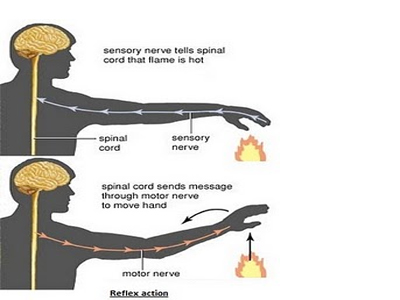What is Reflex Action?
Reflex Action is an activity performed by the peripheral nervous system of human brain in response to certain changes in the environment or the surrounding or by the body itself. It is mostly involuntary and human consent or will is not involved in it. Reflex action is in other words is a counter brain mechanism to handle different situations at different intervals. The sudden changes or activities, which involve in bringing the change, are termed as stimulus and the reaction or counter activity involuntarily performed by body under instructions from the brain is called as response and the whole phenomena is called as reflex action.
Some specific organs from the brain perform reflex action activities. These organs involve different types of long channel of nerve cells and spinal cord. These specialized cells are naturally modified to access and detect the stimuli and they are called as receptor neurons and the path they follow are termed as nerves. One another type neurons are the cells that perform the reaction of stimuli are regarded as the effectors. The receptors, effectors and nerves are distributed throughout the body and connected with all the important organs of the human body. Spinal cord controls all reflex actions by sending minor electric signals toward the nerves and this process is regarded as nerve impulse. Based on working activities the reflex action has two types. Somatic reflexes which involve the muscles of human skeleton like joints of elbow and knees. Autonomic reflexes include smooth muscles of different vital human organs like cardiac muscles of heart and gastric muscles of the stomach.
There are different examples of reflex actions that we perform in our daily life. When we are walking along the roadside at night, a car passes and we blink our eyes suddenly in response to the sparkling waves of car headlights. Often while making tea or any food we accidently touch the hot kettle or hot utensil and quickly response by removing our hand from that object. The other acts of reflexes are coughing, sneezing and jerking of joints. Reflex responsiveness also depends on the body type, age and sex of a person.

Reflex Action Picture


